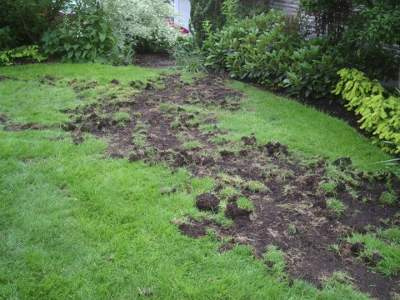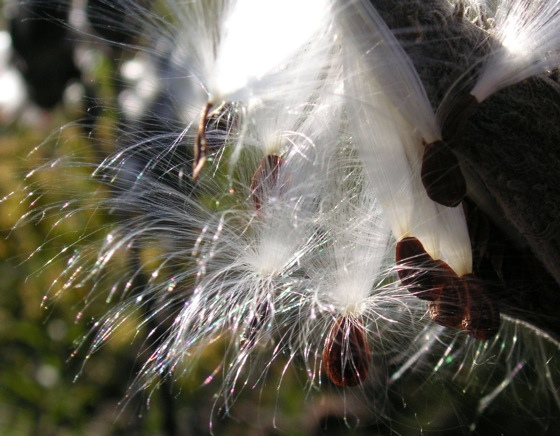I was up before dawn one morning in the fall and gazed out the front window across the lawn. It was still dark. The streetlight added a little illumination to the scene. Out the corner of my eye on the left a small figure dashed across the drive between bushes. It was followed by another and another until five raccoons were in view. As soon as they reached the lawn, they walked a few steps and stopped to probe and feel the grass for a moment. Then, a few more steps, they stopped to check again and again. I have seen patches on golf courses where raccoons have torn up large areas of turf in search of grubs. They can be very destructive as you can see in this photo. Fortunately, they found no grubs in our yard this time.

What does one call a crowd, or herd, or fleet, or flock, or gaggle, or bunch of raccoons. The San Diego Zoo calls them a “gaze.” The gaze made its way across to the right and out of sight between my house and the neighbor’s. I went to the back window to see if they would come around to that side of the house. None showed up. But, in the dark of the trees in back, a deer gazed up at me and quietly munched her way across the back enjoying the last of the greenery.
We headed out for a walk that morning. As we cut through a tall weedy path we came across some milkweeds we had been watching for a couple of weeks. Their pods were beginning to open up to release the multitude of seeds. Nature’s packing expertise with these things is amazing. I have never tried counting them. According to this Ohio State Univ. site, there can be as many as 450 seeds in a pod.

A very common vine on the trees in eastern IA is called the Virginia Creeper. There are several in the trees behind our house. In the fall, the leaves take on a golden, and often deep red, hue. They are prolific high climbers, up to 30 m.
Virginia creeper can be used as a shading vine for buildings on masonry walls. Because the vine, like its relative Boston ivy, adheres to the surface by disks rather than penetrating roots, it will not harm the masonry but will keep a building cooler by shading the wall surface during the summer, saving money on air conditioning. As with ivy, trying to rip the plant from the wall will damage the surface; but if the plant is first killed, such as by severing the vine from the root, the adhesive pads will eventually deteriorate and release their grip. Native Americans allegedly used the plant as an herbal remedy for diarrhea, difficult urination, swelling, and lockjaw.

2 comments